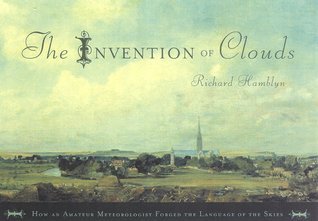
The Age of Wonder: How the Romantic Generation Discovered the Beauty and Terror of Science
Book Description
A breathtaking journey unfolds as the Romantic Generation steps into the electrifying realm of science, where beauty collides with the unknown. Richard Holmes illuminates the minds of daring innovators and dreamers who challenged conventions, unraveling nature’s mysteries while grappling with the awe and dread they ignited. From the secrets of the cosmos to the depths of human imagination, each discovery casts a spell that beckons, revealing a world where art meets scientific revelation. As wonder and terror intertwine, one question lingers: what price do we pay for the knowledge that transforms our very understanding of existence?
Quick Book Summary
"The Age of Wonder" by Richard Holmes chronicles the thrilling era in late 18th and early 19th century Britain when science and Romanticism united. Holmes explores the lives of pioneering figures like astronomer William Herschel, chemist Humphry Davy, and explorer Joseph Banks, who revolutionized scientific thought while grappling with the philosophical and spiritual consequences of their discoveries. The book reveals how these scientists, inspired by both reason and imagination, saw science not as dry calculation but as a wondrous quest for meaning and beauty. Holmes examines not only their achievements but also the anxieties their pioneering work provoked, as boundaries between the known and unknown collapsed. By highlighting the intersection of scientific progress with poetry, art, and emotion, Holmes paints a vivid portrait of an age defined by both its hunger for knowledge and its reverence for mystery.
Summary of Key Ideas
Table of Contents
The Intersection of Science and Romanticism
Holmes opens his narrative in an age marked by revolution in both politics and thought, charting a period when science and Romanticism were not seen as opposing forces but as complementary. He focuses on Britain’s scientific rise, spotlighting the pursuit of celestial wonders by William and Caroline Herschel. Their astronomical discoveries—like the planet Uranus—ignited public fascination and raised profound questions about humanity’s place in the cosmos. The Herschels exemplify how curiosity, craft, and imagination wove together, fueling discoveries and new philosophical debates.
Individual Genius and Collaboration
Another central theme is the emergence of the individual scientific genius. Figures such as Joseph Banks and Humphry Davy are portrayed as both dreamers and experimenters. Banks’ extensive voyages established him as a global naturalist, while Davy’s electrifying experiments with gases and elements redefined chemistry and life itself. Yet Holmes shows that these advances were not solely the result of lone genius; networks of patrons, laboratories, and societies enabled collaboration and the exchange of ideas, vital for the era’s scientific ferment.
Scientific Discovery and Public Imagination
Holmes delves into the transformative impact of scientific discovery on the lay public and the artistic community. Scientific lectures became popular entertainment and a subject of fascination in literature and art, influencing writers like Shelley and Coleridge. Science was not merely about technical progress; it sparked intense debates about ethics, faith, and the limits of human understanding. The period’s discoveries inspired awe but also existential anxiety, as age-old certainties were upended and the sense of mystery deepened.
The Beauty and Terror of Nature
Throughout, Holmes meditated on the double-edged nature of scientific progress—the exhilarating beauty and unsettling terror inherent in peering beyond established boundaries. Explorers and experimenters confronted nature’s overwhelming power, whether in the vastness of the sky or the dangerous volatility of chemical reactions. The book illustrates how the Romantic generation saw science as a pathway to both enlightenment and sublime uncertainty, shaping a vision of nature both wondrous and daunting.
Enduring Legacy of the Romantic Generation
Concluding, Holmes assesses the legacy of these scientist-poets, arguing that their integration of reason with imagination laid the foundation for modern science. Their passion for wonder and their recognition of the unknown’s value continue to resonate, inviting us to approach knowledge with both courage and humility. In illuminating their lives and struggles, "The Age of Wonder" challenges today’s readers to recapture a sense of awe and a holistic vision of science.
Download This Summary
Get a free PDF of this summary instantly — no email required.





